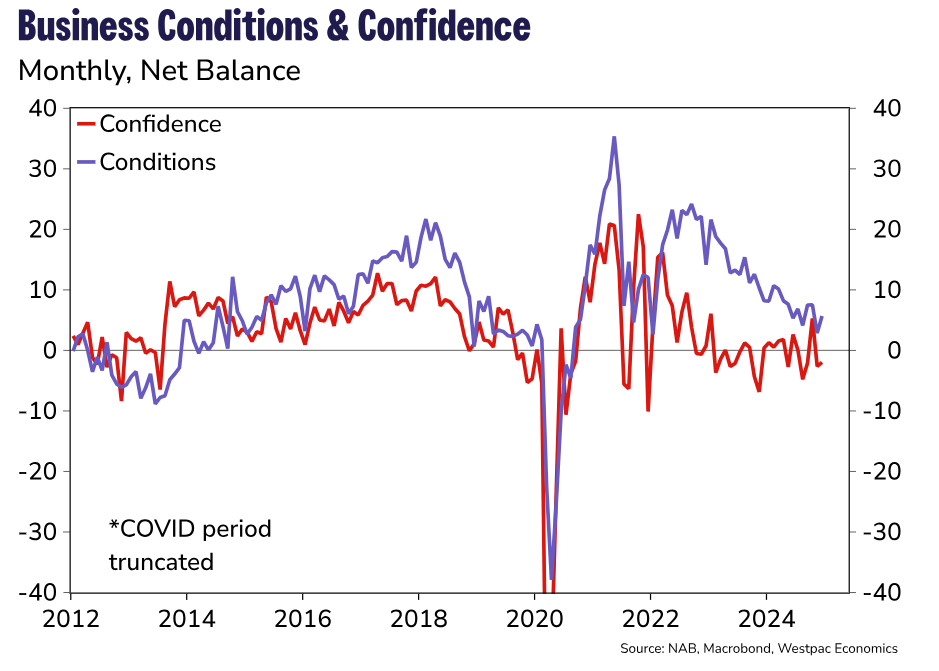

Australian business and consumer confidence show mild improvement as 2024 ends, indicating cautious optimism for 2025 despite ongoing challenges.
December witnessed a modest uptick in business conditions, with the headline business conditions index climbing to +6, a slight improvement from November's +3 but still lower than earlier in the year.
Westpac analysts Mantas Vanagas and Ryan Wells (pictured above, left and centre) noted that despite these gains, the overall trend suggested that the operating environment for Australian businesses remains challenging.
The average for the quarter sat just below the year's average, indicating no significant improvement in the landscape businesses are navigating.

The improvement in December’s business conditions was not driven by any single factor; instead, gains were noted across trading conditions, profitability, and employment sub-indices.
However, these remain near or below the year's averages, underscoring the ongoing struggles businesses face. Interestingly, this subdued employment growth contrasts with official ABS data, suggesting stronger job growth, possibly due to differences in market sector performances.

Despite the slight rise in business conditions, the confidence index barely moved, inching from -3 to -2. This reflects a continued cautious outlook among businesses, with forward-looking indicators for new orders and capital expenditures showing only minor improvements.
However, capital expenditures reached a 15-month high, indicating a possible increase in business investment intentions as the year closed, Westpac reported.
Consumer confidence, tracked by ANZ-Roy Morgan, remained relatively stable over the Australia Day long weekend, with the index marking 86.
“ANZ-Roy Morgan Australian Consumer Confidence was steady last week, rising just 0.2pts,” said ANZ economist Sophia Angala (pictured above right). “Weekly inflation expectations fell 0.2pts to 5%, but this was a pullback of the six-month high in the week prior.”
Despite this stability, consumer buying intentions declined for the third consecutive week, suggesting ongoing hesitancy to increase spending. This trend is crucial as consumer spending is seen as a primary driver for economic growth moving forward.
Consumer sentiment varied by state, with New South Wales and Victoria experiencing increases, while Queensland, Western Australia, and South Australia saw declines.
The overall sentiment towards personal finances and the economy showed a mix of cautious optimism and persistent concerns, reflecting the complex economic dynamics as Australia transitions into 2025.
Looking further ahead, the sentiment about the Australian economy over the next five years remained unchanged, with a balanced view between optimism and pessimism among consumers. This reflects an ongoing uncertainty about the long-term economic trajectory amidst current economic policies and global economic conditions.
Overall, as Australia moves into 2025, both businesses and consumers appear to be treading carefully, balancing cautious optimism with an awareness of the ongoing economic challenges.
